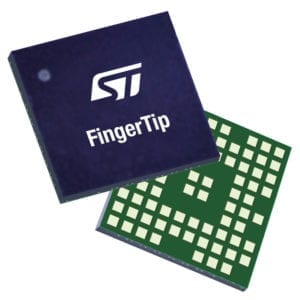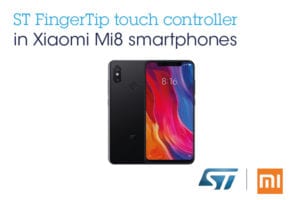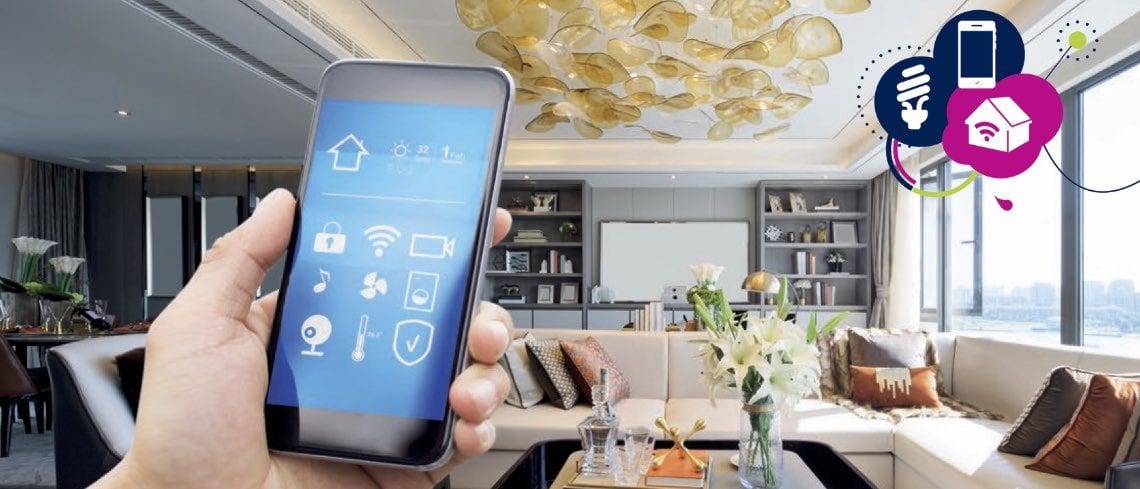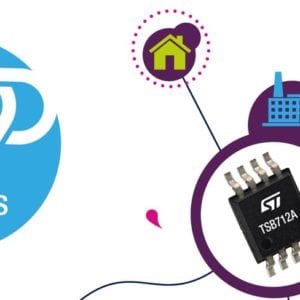Our FingerTip Touch Screen Controller is in many of the flagship phones that will adorn this year’s Christmas trees, which is why we decided to delve deeper into the technology to understand why it is so popular with AMOLED screens. The latest example is the Xiaomi Mi8 that recently launched to rave reviews, making it one of our top choices in our 2018 Holiday Gift Guide. Journalists praised its impressive rear camera, its sharp design, and beautiful 18:7:9 AMOLED screen as well as its responsive interface, making it one of the best value propositions of this generation of smartphones. These last two features are possible in part because of our FingerTip Touch Screen Controller as our device ensures that AMOLED displays, even those with curved or foldable substrates, get the most advanced touch technologies without any negative impact on performance or image quality.
Working on a touchscreen controller is often different than what happens on a microcontroller or a power device because there’s a lot more customization. Even if the foundations and the significant features are identical across all our FingerTip controllers, we work closely with manufacturers to personalize each firmware and optimize each implementation to guarantee optimal performance. Indeed, unlike phones with LCD screens that integrate the touch controller in the display’s driver, AMOLED requires a discrete component that must fit all sorts of designs, which explains why our solution is so popular. Manufacturers know that they’ll end up providing the best experience to their customers because of the customization and support we offer. However, this is only possible because, at its core, our FingerTip solution ensures incredible performance thanks in part to an astounding signal-to-noise ratio (SNR).
Reason 1: Great SNR and Noise Immunity

The latest FingerTip controller, officially revealed in 2017, has a substantially higher SNR than the previous generation. Additionally, even more critical than the signal-to-noise ratio is the increase in external noise immunity. When dealing with the tight environments of smartphones, the display is the biggest culprit when it comes to noise, but chargers and RF are not far behind and can negatively impact the touch controller’s performance. There are also famous cases in consumer electronics where radiation from external products cause severe problems for customers and manufacturers. It is thus imperative to filter the outside noise and ensure that the firmware of our touch controller is capable of rejecting these parasitic signals to avoid misinterpreting a command or malfunctioning altogether.
Hence, to improve the noise immunity, we implemented a feature that can scan a particular frequency and reject all others. As a result, the system discards anything that isn’t a touch from the user, thus significantly optimizing the FingerTip’s performance. We implemented this filter at the hardware level to prevent noise from penetrating the Analog Front End (AFE), which explains the increase in SNR and signal immunity. Furthermore, we made the analog-to-digital converter (ADC) much faster thus enabling a greater sampling of the information that the touch layer captures. The direct consequence of all these functionalities is that we can offer some of the most advanced touch detection in the industry, such as water, grip, and palm rejection, as well as glove recognition, multitouch (up to 10 fingers), and wet finger support, for a sensitivity and precision that significantly enhances the user’s experience.
Reason 2: Record Power Consumption

The new generation of FingerTip Touch Screen Controllers that we find in phones today is also the product of a major architectural overhaul. Previous devices used two dies in one package, but this current crop moved to a single 90 nm die. Beyond a smaller surface area, the process node also brings a reduction in voltage. Indeed, thanks to significant lithographic and manufacturing optimizations, we were able to bring the power down from 3.3 V to 1.8 V in most of the component. As a result, the new controller offers the lowest power consumption in the industry, which helps smartphones extend their battery life to improve the user’s experience. Additionally, a lower power consumption means a lower heat dissipation, which enabled us to launch the thinner packages that are so popular among smartphone manufacturers that are always looking to make their chassis sleeker.
Beyond a lower power consumption, our Touch Screen Controller also offers autonomous switching between various low power modes, thus enabling more functionalities while also optimizing battery consumption. For instance, after a period of inactivity or if the system detects that the screen is face down, the controller switches to Idle mode, meaning that it shuts down certain parts of the component while still being able to detect touch and wake the system up as soon as the user interacts with it. The controller can also go into a Gesture mode that can tolerate a shut down of the host microcontroller, among others, and reactivate the system once it detects a specific gesture, such as a double tap. These features are crucial because they directly impact the average consumption of the controller thanks to dynamic configurations.
Reason 3: A Future-Proof Touch Screen Controller
ST designed the FingerTip to be future-proof as many smartphone manufacturers reuse their displays over multiple generations of products, which means that they look for a controller that will still be relevant in a few years. Hence, we included the latest interface protocol, including I3C, to match the requirements of the newest application processors. Moreover, our touch controller can reach a report rate of up to 240 Hz to offer extremely fast response times and reduce the latency in gaming applications. This frequency is so high that most phones don’t even use it yet and limit themselves to 120 Hz. Consequently, we are still a few generations of smartphones away from entirely taking advantage of the performance we offer. The FingerTip is also compatible with the latest foldable displays introduced in 2018.




